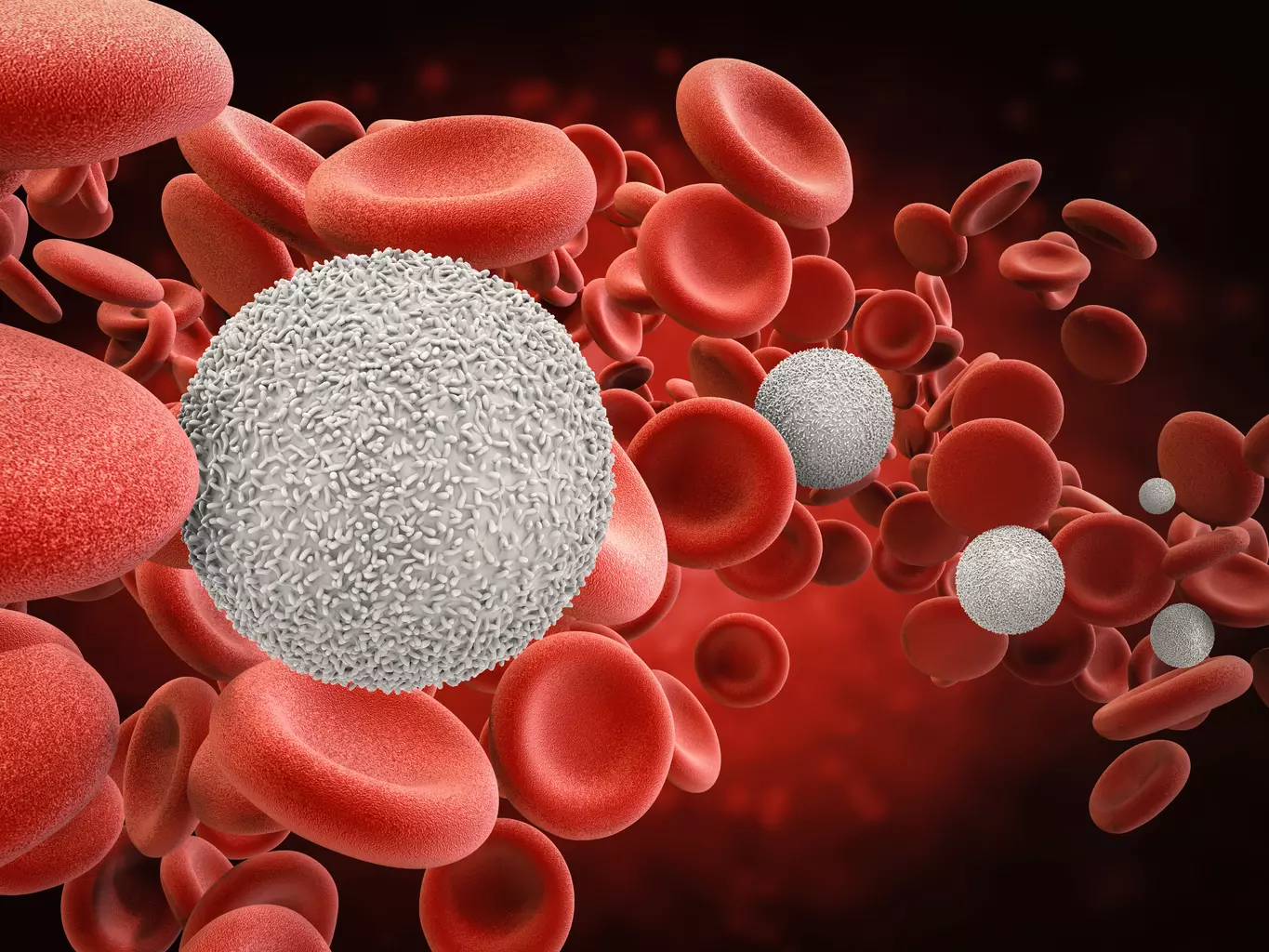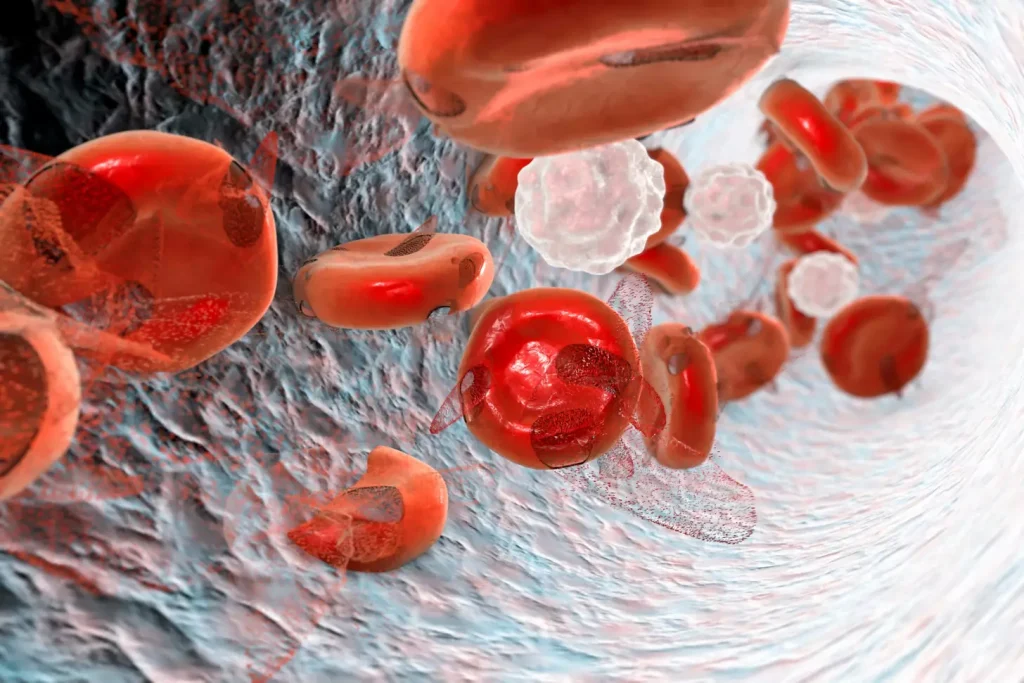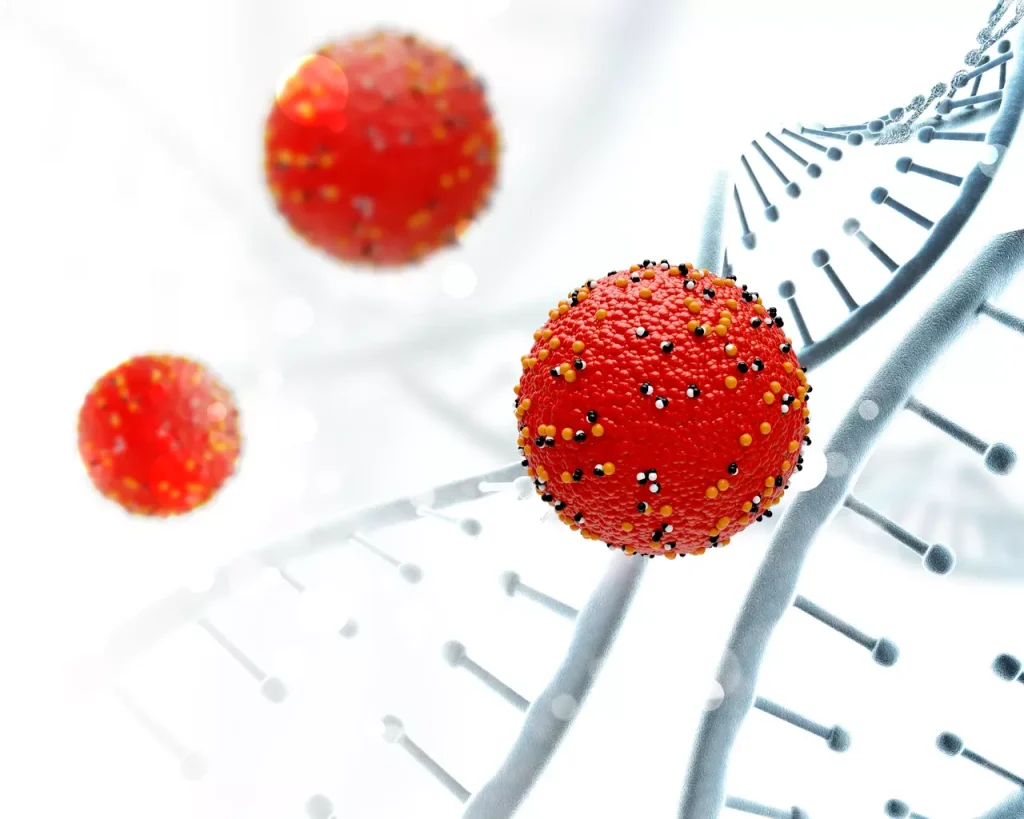
It’s important to know how different blood cells work together to fight cancer. Some white blood cells can eat cancer cells. This is key in understanding and treating blood cancers.
At Liv Hospital, we focus on top-notch care for blood cancers like leukemia, lymphoma, and myeloma. Our team keeps up with new discoveries in hematology. This ensures our patients get the best treatments.
The way white blood cells interact with cancer cells is a big area of study. It helps us find new ways to treat blood cancer and improve survival rates.

White blood cells are key to our immune system. They protect us from many diseases and pathogens. They are always ready to keep us healthy.
White blood cells, or leukocytes, are vital in fighting infections. They find and destroy harmful invaders. This keeps our body safe from diseases.
Key functions of white blood cells include:
There are many types of white blood cells, each with its own job in the immune system.
| Type of White Blood Cell | Function |
|---|---|
| Neutrophils | Primarily involved in combating bacterial infections |
| Lymphocytes | Play a key role in specific immune responses, including the production of antibodies |
| Monocytes | Mature into macrophages, which engulf and digest cellular debris and pathogens |
The immune system works hard to keep us safe from diseases. White blood cells lead this effort. They use different ways to find and get rid of threats.
The process involves:
Knowing how white blood cells work is important. It helps us understand their role in diseases like cancer of the blood and bone marrow. In these diseases, their behavior changes a lot.

In the fight against blood cancer, macrophages use a key process called phagocytosis. This is how the immune system fights cancerous red blood cells.
Macrophages are important in the immune system. They find and eat foreign particles and cancer cells. They spot cancerous red blood cells by certain signals, like changes in proteins on the cell surface.
Once they find these cells, macrophages wrap their cell membrane around them. This forms a phagosome that then merges with lysosomes. The lysosomes break down the engulfed material.
Studies show macrophages can change how they work. For example, a study in Nature talks about how macrophages and cancer cells interact. This shows how important it is to understand these interactions.
Cellular digestion involves several steps. After eating cancer cells, macrophages create phagosomes. These then mix with lysosomes, which have digestive enzymes.
These enzymes break down the cells into smaller parts. These parts can be reused or thrown out of the body.
This detailed process is key to getting rid of harmful cells. It helps keep the body healthy.
The phagocytosis process is vital in fighting blood cancer. It helps control cancer cell numbers. Good phagocytosis can slow down tumor growth and spread.
But, if this process doesn’t work well, cancer can grow. Knowing how phagocytosis works in blood cancer can help find new treatments. For example, making macrophages work better could help fight cancer.
Learning about blood cancer means knowing its three main types: leukemia, lymphoma, and multiple myeloma. These cancers impact the blood, bone marrow, and lymphatic system differently. This leads to various symptoms and treatment plans.
Leukemia starts in the body’s blood-making tissues, like the bone marrow. It’s marked by too many white blood cells, which are key for fighting off infections. There are several leukemia types, each with its own traits and treatment paths.
Key features of leukemia include:
Lymphoma starts in the lymph system, a part of the immune system. This system includes lymph nodes, spleen, and more. There are two main lymphoma types: Hodgkin and non-Hodgkin lymphoma (NHL). Hodgkin lymphoma has Reed-Sternberg cells, while NHL is more varied.
Lymphoma symptoms often include:
Multiple myeloma affects plasma cells, a type of white blood cell. Plasma cells make antibodies to fight infections. In multiple myeloma, cancerous plasma cells fill the bone marrow, harming healthy cells.
Common symptoms of multiple myeloma include:
In summary, leukemia, lymphoma, and multiple myeloma are the main blood cancers. Each has its own signs and treatments. Knowing these differences is key for the right diagnosis and care.
Blood cancers can really mess up the bone marrow’s job of making blood cells. We’ll look at how these cancers harm the bone marrow, affect blood cell growth, and weaken the immune system.
Bone marrow is the soft tissue inside bones like the hips and thighbones. It makes blood cells. It’s key for carrying oxygen, fighting infections, and stopping bleeding.
Making blood cells is a complex process. It needs many growth factors and cytokines to work right. These help stem cells turn into red and white blood cells and platelets.
Blood cancers like leukemia and lymphoma can take over the bone marrow. This stops it from making healthy blood cells.
When blood cancers mess with the bone marrow, it’s bad news. People might get anemia, infections, and bleeding problems.
A weak immune system makes it hard to fight off infections. This can lead to serious health issues. Knowing this helps us find better treatments.
The effects of blood cancers on the bone marrow and immune system are complex. By diving deep into these issues, we can see the challenges patients face. This shows why we need to care for them fully.
We face rare blood cancers with special needs. These cancers are not common but are tough to diagnose and treat. Knowing their unique traits helps us find better ways to manage them.
Myelofibrosis is a rare cancer that makes the bone marrow scarred. This scarring messes up blood cell making, causing problems. Other disorders like polycythemia vera and essential thrombocythemia also bring their own challenges.
Key features of myelofibrosis include:
Blood tumors, like some lymphomas, show up in different ways. They can cause swollen lymph nodes, fever, and weight loss. How they show up helps doctors figure out what they are.
Common symptoms of blood tumors include:
Finding out what rare blood cancers are can be hard. They don’t always show clear signs, and need special tests. Tests like genetic testing and bone marrow biopsies help doctors get a clear diagnosis.
Diagnostic approaches include:
By knowing what makes rare blood cancers special, we can get better at diagnosing and treating them. Our aim is to give each patient the care they need, tailored to their unique situation.
It’s key to understand how cancer cells and white blood cells interact. This knowledge helps in finding better treatments for blood cancers. Cancer cells and white blood cells have a complex relationship. This affects how the disease progresses and the body’s fight against it.
Cancer greatly affects white blood cells, which are important for our immune system. Leukemia, for example, harms these cells, making it harder for them to fight off infections. Cancer cells can also change how white blood cells work, making them help the tumor grow and avoid being attacked by the immune system.
Some cancer cells send signals that attract certain white blood cells. These cells, like macrophages and T-regulatory cells, can weaken the body’s fight against cancer. This interaction can make the cancer in the blood prognosis worse.
White blood cells react differently to cancerous red blood cells, depending on the blood cancer type. In leukemia, abnormal white blood cells can crowd out normal red blood cells. This leads to anemia and other problems.
Blood cancer cells use several ways to avoid being attacked by the immune system. One method is by making PD-L1, a protein that stops T cells from fighting cancer. This makes it hard for the immune system to attack cancer cells effectively.
“Cancer cells can evade immune detection by expressing checkpoint molecules, making it challenging for the immune system to target them effectively.”
Knowing how cancer cells evade the immune system is vital. It helps in creating targeted treatments. These treatments aim to improve the immune system’s ability to fight blood cancers.
Immunotherapies are changing how we treat blood cancer. They use the immune system to fight cancer. This brings new hope to patients all over the world.
Immunotherapy trains immune cells to find and kill cancer cells. It uses different methods to boost the immune system. For example, checkpoint inhibitors help the immune system attack cancer cells better.
Key strategies include:
CAR-T cell therapy is a new way to fight blood cancer. It takes T cells from the blood, changes them to find cancer, and puts them back. This therapy works well for some blood cancers, even when other treatments fail.
“CAR-T cell therapy represents a significant advancement in the treatment of blood cancers, providing a potentially curative option for patients who have failed other therapies.”
A Hematologist
Other new methods include:
| Therapy | Description | Application |
|---|---|---|
| CAR-T Cell Therapy | Genetically modified T cells to target cancer | Leukemia, Lymphoma |
| Checkpoint Inhibitors | Drugs that release brakes on the immune system | Various blood cancers |
| Adoptive Cell Therapy | Infusing modified immune cells to fight cancer | Multiple myeloma, Leukemia |
Immunotherapies are promising, but their success depends on the cancer type and patient. For example, CAR-T cell therapy works well for some leukemias and lymphomas.
But, there are challenges like side effects. These can include cytokine release syndrome and neurotoxicity. Researchers are working to reduce these risks and improve results.
As we keep improving immunotherapy, we’re changing how we treat blood cancers. We’re using the immune system to help patients and increase survival rates.
The outlook for blood cancer patients changes a lot based on the type and stage. Thanks to medical research, the chances of survival are getting better. We’ll look at survival rates, what affects them, and how treatments work.
New treatments have greatly improved survival rates for blood cancers. Experts report the following five-year survival rates:
| Type of Blood Cancer | Five-Year Survival Rate (%) |
|---|---|
| Leukemia | 65-70 |
| Lymphoma | 75-85 |
| Multiple Myeloma | 50-60 |
These numbers show how far we’ve come in treating hematologic cancers. But, survival rates can change based on when the cancer is found and the patient’s health.
The stage and type of blood cancer greatly affect the prognosis. Being diagnosed early usually means better chances of survival. For example, people with localized lymphoma tend to live longer than those with more advanced cancer.
Many things can affect how well blood cancer treatment works. These include:
Knowing these factors helps doctors create treatment plans that fit each patient’s needs. This can lead to better results.
Finding cancer cells in blood tests shows important details about cancer spread. These cells in the blood often mean the cancer has spread or is advanced.
Circulating tumor cells (CTCs) are cancer cells that leave the main tumor and go into the blood. They show that cancer is getting worse. Studies link the number of CTCs to how serious the disease is and how likely it is to get.
“The count of CTCs has been found to predict how well patients will do with different cancers,” showing their role in tracking the disease.
The blood can carry cancer cells to other parts of the body, called hematogenous spread. When cancer cells get into the blood, they can reach other organs and start new tumors. This is a key part of cancer getting worse and can change how well a patient will do.
Finding cancer cells in the blood is very important for diagnosing and predicting how well a patient will do. It helps doctors see how serious the disease is, if treatments are working, and what the future might hold. New tests are being made to find and study CTCs, helping doctors tailor treatments for each patient.
As we learn more about cancers of the blood and their effects, it’s clear that early detection and tracking are key. Finding cancer cells in the blood is a big factor for doctors when they figure out the disease’s stage and what the future might hold.
Exploring blood cancer, including leukemia, lymphoma, and multiple myeloma, shows us how vital it is to understand the various types of blood cancer. This knowledge is key to finding effective treatments.
At Liv Hospital, we’re dedicated to using the latest treatments for blood cancer. We want to give our patients the best care possible. Research is ongoing to make treatments better, bringing hope to patients everywhere.
Different blood cancers have different names, like leukemia, lymphoma, or myeloma. Knowing the exact name of a blood cancer is important. It helps doctors choose the right treatment for each patient.
We’re always learning more about blood cancers and how to treat them. Our goal is to provide care that meets each patient’s unique needs.
Blood cancer, also known as hematologic cancer, affects the blood, bone marrow, or lymphatic system. It disrupts normal blood cell production, leading to various health issues.
The three major types of blood cancer are leukemia, lymphoma, and multiple myeloma. Each type has distinct characteristics and affects different components of the blood and immune system.
White blood cells play a key role in fighting off infections and diseases. In blood cancer, their function can be impaired or altered, affecting the body’s ability to combat the disease.
Phagocytosis is the process by which certain white blood cells, like macrophages, engulf and digest foreign particles or cancerous cells. This process is critical in controlling cancer progression.
Survival rates vary significantly among leukemia, lymphoma, and multiple myeloma. Factors like cancer stage, patient health, and treatment response play a role. Five-year survival statistics provide a general outlook.
Rare blood cancers, such as myelofibrosis and certain myeloproliferative disorders, have unique characteristics. They often pose diagnostic and treatment challenges due to their rarity and distinct clinical manifestations.
CAR-T cell therapy is a revolutionary immunotherapy that involves modifying a patient’s T cells to target cancer cells. It has shown significant promise in treating certain types of blood cancer, providing new hope for patients.
The presence of cancer cells in the blood, known as circulating tumor cells, can be a marker of disease progression. It may have implications for prognosis and treatment planning.
Blood cancers can infiltrate the bone marrow, disrupting normal blood cell production. This can impair the immune response, leading to various complications and health issues.
Ongoing research and advancements in immunotherapies, such as CAR-T cell therapy, are continually improving treatment options. These advancements offer new hope for patients with blood cancer.
Blood cancer, also known as hematologic cancer, affects the blood, bone marrow, or lymphatic system. It disrupts normal blood cell production, leading to various health issues.
The three major types of blood cancer are leukemia, lymphoma, and multiple myeloma. Each type has distinct characteristics and affects different components of the blood and immune system.
White blood cells play a key role in fighting off infections and diseases. In blood cancer, their function can be impaired or altered, affecting the body’s ability to combat the disease.
Phagocytosis is the process by which certain white blood cells, like macrophages, engulf and digest foreign particles or cancerous cells. This process is critical in controlling cancer progression.
Survival rates vary significantly among leukemia, lymphoma, and multiple myeloma. Factors like cancer stage, patient health, and treatment response play a role. Five-year survival statistics provide a general outlook.
Rare blood cancers, such as myelofibrosis and certain myeloproliferative disorders, have unique characteristics. They often pose diagnostic and treatment challenges due to their rarity and distinct clinical manifestations.
CAR-T cell therapy is a revolutionary immunotherapy that involves modifying a patient’s T cells to target cancer cells. It has shown significant promise in treating certain types of blood cancer, providing new hope for patients.
The presence of cancer cells in the blood, known as circulating tumor cells, can be a marker of disease progression. It may have implications for prognosis and treatment planning.
Blood cancers can infiltrate the bone marrow, disrupting normal blood cell production. This can impair the immune response, leading to various complications and health issues.
Ongoing research and advancements in immunotherapies, such as CAR-T cell therapy, are continually improving treatment options. These advancements offer new hope for patients with blood cancer.
Subscribe to our e-newsletter to stay informed about the latest innovations in the world of health and exclusive offers!
WhatsApp us